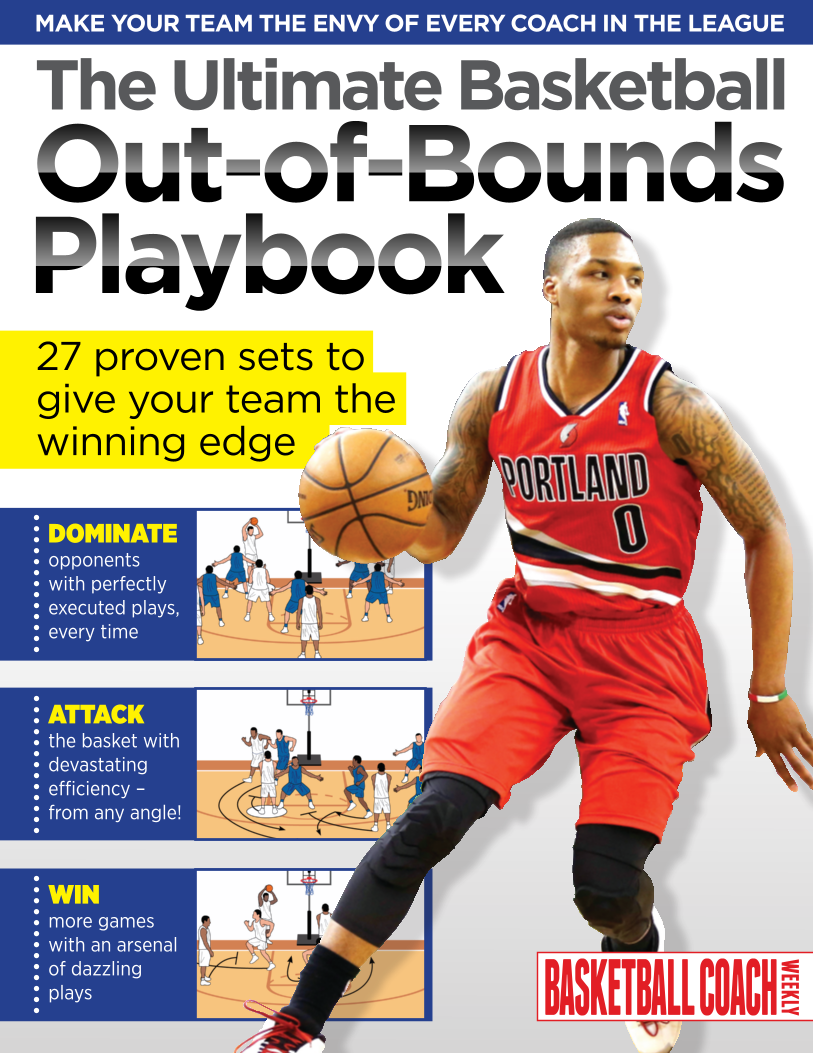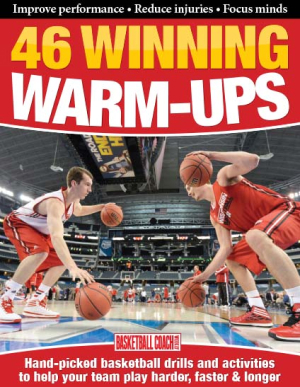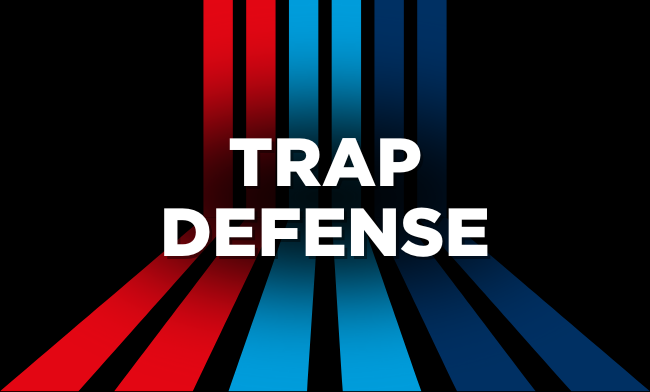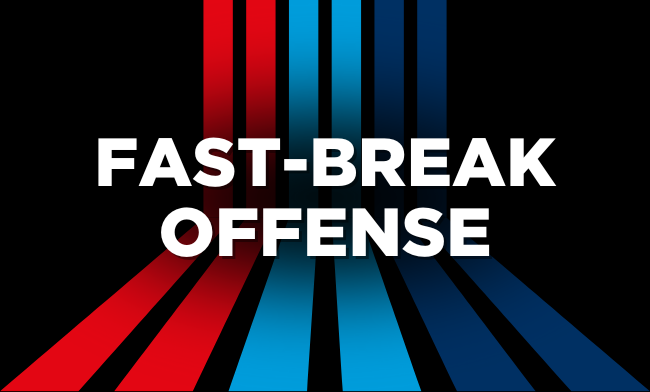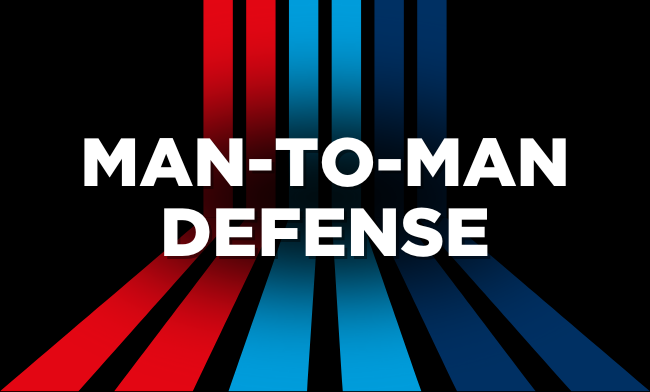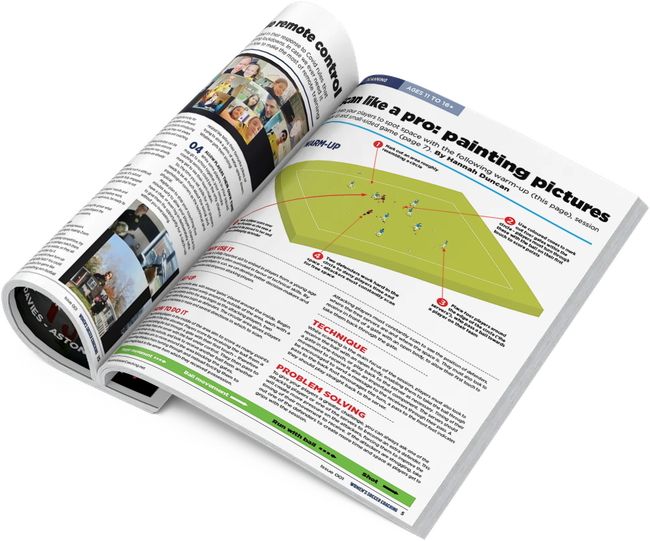Unlocking the Power of Press Defense in Basketball: Strategies, types, and drills
Press defense is an aggressive and high-intensity tactic in basketball designed to apply constant pressure on the opposing team, often with the goal of forcing turnovers and disrupting the offensive flow. Press defenses can be employed full-court, half-court, or in specific trap zones, depending on the team’s strategy. This defensive style is ideal for teams that want to push the tempo, create fast-break opportunities, and take opponents out of their comfort zone.
Explore the fundamentals of press defense, the different types of presses, how to coach them effectively, and drills to help your team master this defensive approach.
WHAT IS PRESS DEFENSE?
Press defense is a strategy where defenders apply pressure on the ball handler and offensive players immediately after the opposing team gains possession of the ball, typically after an inbound pass. Unlike traditional half-court defenses, press defense aims to cover more of the court, often from baseline to baseline, to challenge the offense’s ability to move the ball effectively.
The primary goal of a press defense is to:
- Force turnovers: By pressuring ball handlers and cutting off passing lanes, defenders can cause the offense to make mistakes, such as bad passes or dribbling into traps.
- Disrupt the offensive rhythm: The constant pressure makes it difficult for the offense to set up plays, leading to rushed decisions and poor shot selection.
- Speed up the game: Press defenses are often employed by teams that want to play at a faster pace, using turnovers to create fast-break opportunities.
TYPES OF PRESS DEFENSE
Several types of press defenses can be employed, depending on the team’s strengths and the opponent’s weaknesses:
-
Full-Court Press
In a full-court press, defenders apply pressure across the entire length of the court, starting immediately after the opposing team inbounds the ball. Players work together to cut off passing lanes, force the ball handler into traps, and rush the offense into making mistakes. This strategy is ideal for athletic teams that can sustain high energy levels and cover large areas of the court.Full-court presses can be man-to-man, where each defender marks an opposing player, or zone-based, where defenders cover specific areas of the court.
-
Half-Court Press
A half-court press begins when the opposing team crosses midcourt. This approach saves energy compared to a full-court press and is often used to slow down offenses and prevent them from getting into their offensive sets. Defenders apply pressure at key points on the court, especially near the sideline, where they can trap ball handlers. -
1-2-1-1 Press (Diamond Press)
The 1-2-1-1 press, also known as the diamond press, is an aggressive full-court zone press designed to force turnovers. Defenders are arranged in a diamond shape, with one player at the top pressuring the inbounder, two players trapping the first pass receiver, and one player guarding the backcourt. The goal is to create a quick trap, force an errant pass, and capitalize on turnovers. -
1-2-2 Zone Press
In a 1-2-2 zone press, one defender pressures the ball at the top of the key, two defenders cover the wings, and two more defenders protect the backcourt. This setup creates a net-like defense that can trap ball handlers along the sideline and prevent easy passing options. It is effective at cutting off forward movement and forcing the ball handler into tight spaces. -
Run-and-Jump Press
The run-and-jump press is a man-to-man full-court defense that uses unpredictability to force turnovers. Defenders pressure the ball handler, and once the dribbler commits to a direction, another defender "jumps" the ball handler, creating a double team. The idea is to catch the ball handler off guard and force a rushed decision.
WHEN PRESS DEFENSE IS EFFECTIVE
Press defenses can be highly effective in various game situations:
- Against weaker ball handlers: Press defense is ideal when the opposing team has players who struggle to handle pressure or make quick decisions under duress.
- To speed up the tempo: Pressing forces the offense to play at a faster pace, which can result in rushed shots, poor decisions, and turnovers.
- To come back from a deficit: Teams down by several points often employ a press to disrupt the offense and create quick scoring opportunities to close the gap.
- To wear down the opponent: Press defense forces the offense to work hard to advance the ball up the court, which can tire out key players over the course of a game.
HOW TO COACH PRESS DEFENSE
Coaching press defense requires teaching players how to work together to apply pressure while maintaining defensive balance. Here are a few key coaching points:
- Communication: Press defense relies heavily on communication. Players must constantly talk to each other, calling out screens, traps, and switches to ensure seamless coverage.
- Reading Triggers: Teach players to recognize when and where to trap the ball handler. Typically, trapping is most effective near the sidelines or in corners where the offensive player has limited passing or movement options.
- Conditioning: Pressing requires high levels of energy and fitness. Players must be in top physical condition to execute a press defense effectively for long stretches.
- Rotations: When trapping or pressuring the ball handler, other defenders must rotate to cover open passing lanes. Proper rotation prevents easy scoring opportunities if the press is broken.
DRILLS FOR PRESS DEFENSE
Here are a few essential drills to help your team master press defense:
-
Full-Court Pressure Drill
This drill simulates the intensity of a full-court press, focusing on pressuring the ball handler, cutting off passing lanes, and trapping effectively. The drill involves both offense and defense, with the offense attempting to break the press while the defense applies pressure and traps. Rotate players to work on conditioning and teamwork. -
Diamond Press Drill (1-2-1-1)
In this drill, players practice the 1-2-1-1 diamond press. The drill focuses on trapping the ball immediately after it is inbounded and rotating quickly to cover passing lanes. Players work on creating a quick trap and forcing bad decisions from the ball handler. -
Run-and-Jump Press Drill
This drill teaches players how to implement the run-and-jump press. Players practice applying pressure on the ball handler and timing the jump to trap or double-team at just the right moment. Emphasis is placed on communication and timing, as mistiming the jump can lead to easy scoring opportunities for the offense.
COMMON MISTAKES IN PRESS DEFENSE
Despite its effectiveness, press defense can lead to mistakes if not executed correctly. Here are some common errors to watch out for:
- Overcommitting: Press defense requires balance. Overcommitting to traps or pressure without proper rotations can leave large gaps in the defense, leading to easy baskets.
- Poor Conditioning: Pressing is physically demanding. If your team isn’t well-conditioned, they may not be able to sustain the energy needed to apply consistent pressure.
- Ineffective Trapping: If traps aren’t set at the right time or place, the offense can easily pass out of the press and create transition opportunities. Players need to understand where and when to trap effectively.
CONCLUSION
Press defense is a dynamic and aggressive strategy that can change the flow of a game by forcing turnovers and speeding up the tempo. By mastering the various types of press defenses, such as the full-court press, diamond press, and run-and-jump press, teams can apply relentless pressure on their opponents and capitalize on mistakes. Through focused drills and consistent practice, your team can learn how to execute press defense effectively and use it as a powerful weapon in your basketball arsenal.
Newsletter Sign Up
Coaches' Testimonials

John Allen, AAU National Boys Basketball Commissioner

Wade Wolff, Colfax Youth Development League
Further Reading
Newsletter Sign Up
Coaches Testimonials

John Allen, AAU National Boys Basketball Commissioner

Wade Wolff, Colfax Youth Development League
Discover the simple way to become a more effective, more successful basketball coach
In a recent survey 89% of subscribers said Basketball Coach Weekly makes them more confident, 91% said Basketball Coach Weekly makes them a more effective coach and 93% said Basketball Coach Weekly makes them more inspired.
*includes 3 coaching manuals
Get Inspired
All the latest techniques and approaches
Basketball Coach Weekly offers proven and easy to use basketball drills, coaching sessions, practice plans, games, warm-ups, training tips and advice.
We're at the cutting edge of basketball coaching since creating resources for the grassroots youth coach, following best practice from around the world and insights from the professional game.


